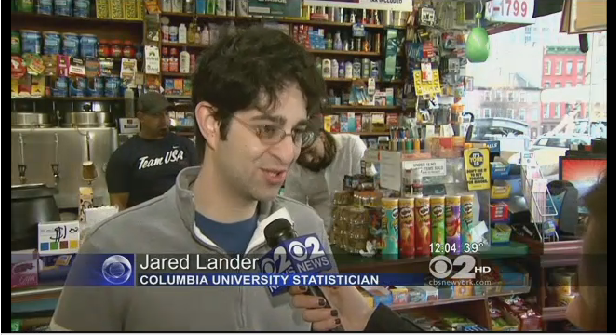Thanks to Rachel Schutt, who I’m teaching with at Columbia, and Cathy O’Neil from MathBabe I had the opportunity to go on TV and talk about the statistics of tonight’s Powerball lottery.
There’s an article with a brief quote from me and a video where I may a very quick appearance at the 1:14 mark. My interview during the live broadcast actually went on for about three minutes but I can’t find that online. If I can transfer the video from my DVR, I’ll post that too.
In the longer interview I discussed the probability of winning and the expected value of a given ticket and other such statistical nuggets. In particular I broke down how choosing numbers based on birthdays eliminates any number higher than 31 mean you are missing out on 28 of the 59 possible numbers that are uniformly distributed. Hopefully I’ll find that longer cut.
The video can be found here: Video

Jared Lander is the Chief Data Scientist of Lander Analytics a New York data science firm, Adjunct Professor at Columbia University, Organizer of the New York Open Statistical Programming meetup and the New York and Washington DC R Conferences and author of R for Everyone.


